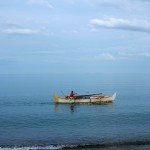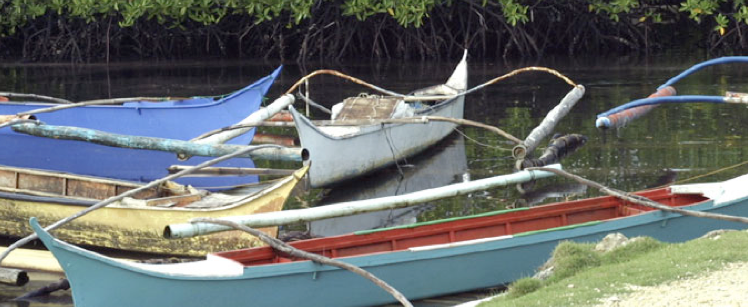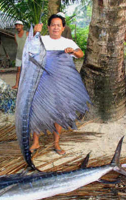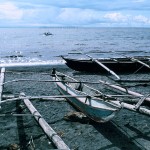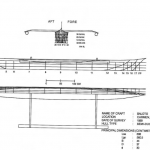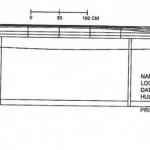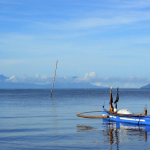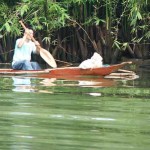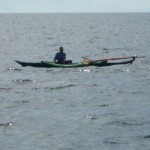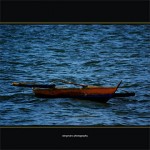How Typhoon Haiyan Devastated One Village’s Fishing “Fleet” – and what it will take to recover
In the early days after Typhoon Haiyan (Yolanda) struck the central Philippines, we didn’t know who was alive or dead, then it was a matter of desperately getting food and medicine where it was needed; then shelter.
Now, 17 days after the monster storm hit, the question of how to restore livelihoods is moving to the forefront. In our hometown of Guinob-an, basic subsistence fishing in one-man boats has always been an important element in the economy. For centuries fishermen have gone to sea in the waters of the Leyte Gulf in search of a range of fish When the fishing is good, there is money to be made – not a lot, but enough to buy rice, oil, sugar, salt. And when it is not so good, there is still the opportunity to feed a family.
The traditional boat was known as a “binigiw” — a one-person outrigger with a paddle and a sail. Rena’s father paddled out every day in such a boat for many, many years. Rena describes what it was like in the 1970’s and 80’s as she was growing up:
(Excerpt from Daughter of Samar):
My father Loreto was a lean, very strong man of forty when I was born. Now he is in his seventies (pictured below left). He is still very thin and has a lean, strong body. Like most of the men in Guinob-an, he was a fisherman when the fishing was good. During the months of March to May he and the others would paddle out in his one man “binigiw” outrigger canoe (or sail out if the wind was favorable) to fish for marlin and sailfish which were plentiful just a few miles offshore and could be caught on handlines using baits tied to floating drums. He would put out half a dozen baits and watch them. A strike would cause the floating drum to disappear under water briefly , and then he would chase it down using paddle and sail, throw a line around it, and begin working the fish. Upon catching a single marlin or sailfish, he would lash the fish to the side of the boat and paddle home.
Other times of the year he fished for Lapu-lapu, grouper, and other bottom fish. My mother is Tarcila, also in her early 70′s now — and she raised not only her own 12 chidren, but half a dozen grandchildren, and held our family together through economic and natural catastrophes. She’s lived a hard life but still has a quick and hearty laugh.
The Guinob-an Fleet Prior to Typhoon Haiyan
Today the boat remains about the same, except that now a motor is included. They no longer refer to the boat as a “binigiw” — they call it a “motor”. (I had a hilarious cell phone conversation with Rena’s brother Rommel trying to get him to give me the “real name” for the boat, which he insisted is “motor” , pronounced mo-TOR, and that’s just the way it is, resisting all my attempts to elicit a more native sounding name.)
Post typhoon research in Guinob-an reveals the following:
- Number of boats prior to the storm — 28
- Number of boats completely destroyed — 24
- Number of boats that are salvageable — 4
- Number of motors pre-storm — 28
- Number of motors salvaged — 12
The Cost to Replace the Fleet
The boats are created via native techniques. The hull is procured from the forests. Other elements have to be purchased, however, and the fishermen then put the boat together.
Meanwhile, the motor elements are procured, usually in Tacloban, although today it might have to be Manila.
What are the costs?
Basically, about P10,000 for the boat and a similar amount for the motor (but a boat without a motor is better than no boat at all)…..roughy $500 per boat, including a motor . There are some add-ons — fishing gear, a sail….plus some minor costs so have someone supervise …. But any way you slice it, by global standards, the costs are tiny, and the benefit is extraordinarly.
Now .. think about it. An entire village’s fleet back on the water for less than the coast of one moderately priced 18 foot used Boston Whaler.
Why It Makes Sense to Prioritize The Rebuilding of the Fishing Fleet
Is there any reason not to move quickly to get the fishermen of Guinob-an (and all the other fishing villages that have been destroyed) back out onto the water?
I can’t think of any.
Nothing would put food on the table faster.
Nothing would provide greater return on recovery investment.
And it somehow resonates with the core identity of the town, it’s people — they’ve been living off the sea for centuries.
This needs to happen.
Not just for one village — although that’s a place to start.
Here is a map of all of Eastern Samar — zoom in to see Guinob-an and all the other little towns.
And here is a gallery of images. There are many minor subtle variations among the different types of boats. These were all selected as ones that are reasonably close to the type of boat being used in Eastern Samar.
Year of the Spy Book Trailer
Above is the Year of the Spy Book Trailer — for my upcoming non-fiction book about espionage upheavals on the streets of Moscow in 1985.
Below is a “trailer” showcasing the writing and video services I provide to clients.
Michael Sellers — Writing and Video Services
My eBook — Just released Dec 5, 2012
EBook You don't need a Kindle or iPad -- Download Adobe Digital Editions for Free, then read the .mobi (Kindle Format) or .epub (Nook, iPad Format) digital book on your computer. Or order the PDF which is formatted exactly like the print book.Recent Posts
- Arsha Sellers — Today I’m One Big Step Closer to Becoming a Real Forever Dad
- Meet Abby Sellers and Arshavin Sellers — My Wife, My Son, My Inspiration Every Day
- What the Mueller Report Actually Says
- Remembering James Blount, an American Who “Got” the Philippines in 1901
- America the Beautiful? You Mean America the Pitiful. I Am Ashamed

